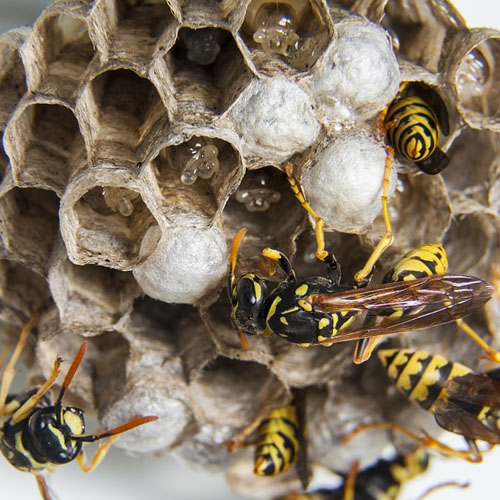Bee stings don’t happen daily, but when they do, it’s important to know how to remove the stinger safely and what to do to try to reduce the pain and itching, especially if there’s a bee nest nearby. What’s important to remember is that it is completely normal to experience a panic-induced adrenaline rush and that the sting feels much worse than it actually is. It’s very important to stay calm, relax and concentrate.
Act Fast to Remove the Stinger
Perhaps the most unfortunate part of a bee sting is that the bee usually always dies as a result of stinging you. This is because the stinger is shaped like a harpoon, and it becomes impossible for the bee to pull away without self-amputating part of its abdomen, muscles and most importantly the venom sac. The venom sac which is linked to a stinger usually stays attached once the bee flies away, and can continue to emit poison if the stinger is not removed quickly.
The swelling and discomfort felt when a bee sting is caused by this venom, so it’s important to remove the stinger as soon as possible. Time is of the essence here – try to remove the stinger within 30 seconds.
Keep Calm
After you get stung, it’s natural to panic. However, it’s important to try and stay calm. This will help you focus on removing the stinger quickly, and it will also help to prevent the release of more venom into your skin.
Try not to touch or squeeze the stinger, as this can cause more venom to be released. If you have long nails, try to avoid using them to remove the stinger, as you may inadvertently push more venom into your skin.
Inspect the Sting
The first thing you should do once removing the stinger is to examine the sting spot. Redness, slight swelling or a red bump with a dot in the centre is perfectly normal. You may also see a small white sac attached to the stinger. This is the venom sac, and it’s important to remove it if you can.
The sting will, of course, sting and itch, but this is also completely normal. The pain and swelling should go away within a few hours.
If the string begins to swell excessively or you start to feel ill, these may be signs of an allergic reaction and you should seek medical attention immediately.
Remedies to reduce symptoms
There are a few home remedies that can be used to prevent itching and swelling after a sting. Please note that most of these remedies aren’t backed by medical research but they do seem to work for a lot of people.
Apple Cider Vinegar
Rubbing apple cider vinegar on the area of the sting for 15 minutes is believed to neutralize bee venom, prevent infection and lower inflammation.
Baking Soda
Baking soda when mixed with water is also said to help neutralize bee venom, and reduce pain, itching and also swelling. Mixing baking soda with enough water to make a paste and applying it to the area for 15 minutes should help to relieve symptoms.
Honey
Honey has also been found to alleviate the pain and itching sensations associated with a bee sting. Apply a small amount of honey to the stung area, cover the sting with a loose bandage and leave the bandage on.
Conclusion
Bee stings can be painful and itchy, but following the steps we’ve outlined here should help to reduce the symptoms. If you experience excessive swelling or start feeling ill after being stung, please seek medical attention immediately. Home remedies like apple cider vinegar, baking soda and honey may also provide relief from pain and itching.
If you’re having problems with bees or wasps around your home, consider contacting a pest control expert for bee and wasp removal.

